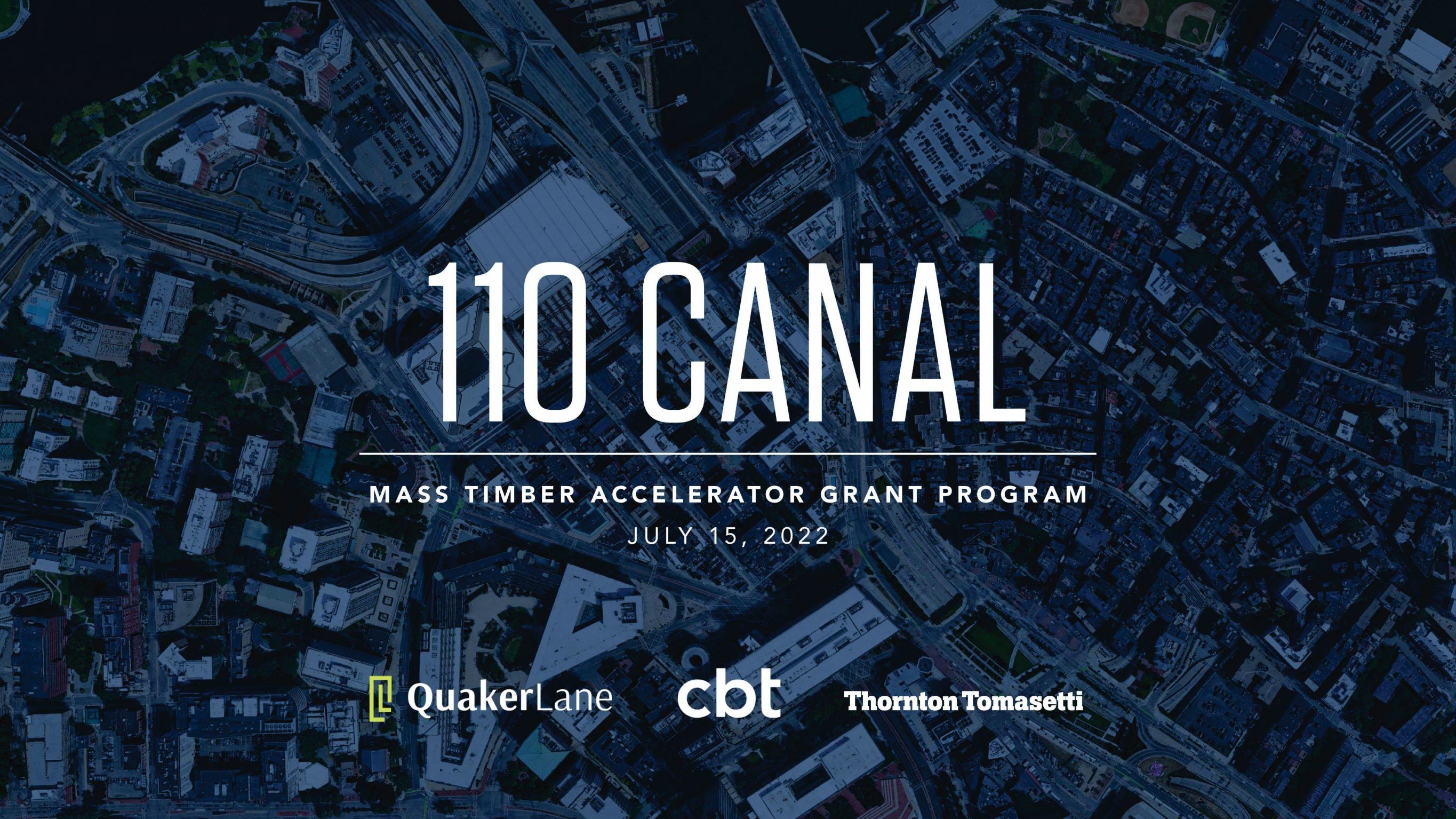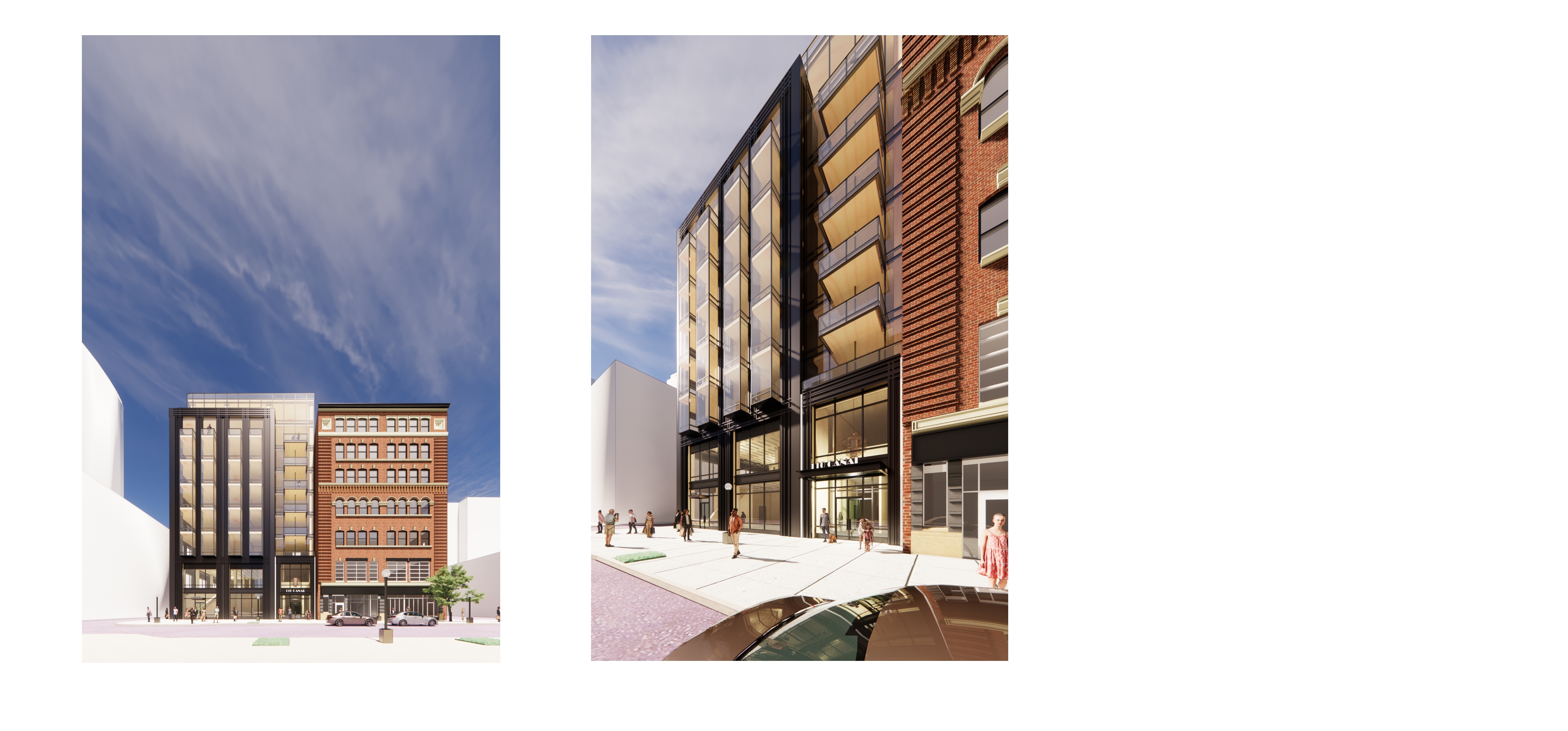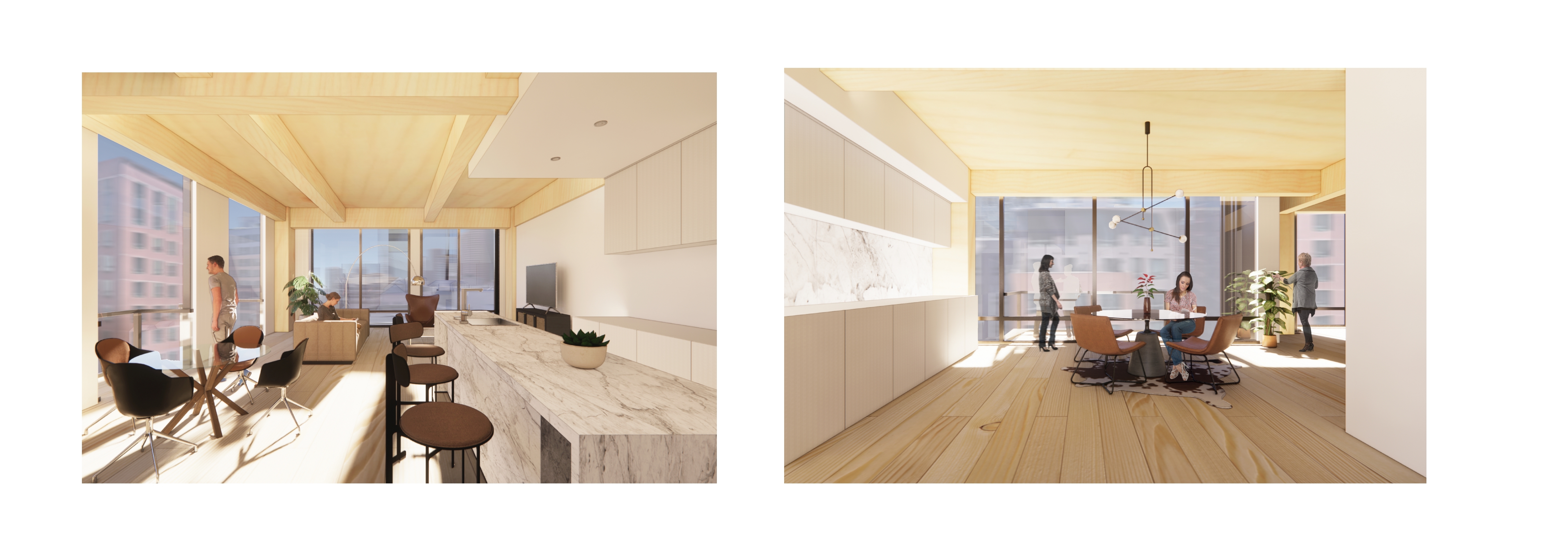110 Canal Street
Project Team
CBT Architects / Architect
Quaker Lane Capital / Development Partner
Thorton Tomasetti / Structural Engineer

Executive Summary
Mass timber construction for 110 Canal enriches the neighborhood and reduces the carbon footprint of the building.
First, there are many tangible benefits— from a sustainability perspective, to versatility and speed of construction. Second, at 10 stories, the scale of what’s being proposed is right in the sweet spot for this type of engineering & construction. Last, but not least, mass timber provides an architectural aesthetic ideal for great placemaking within this unique combination of historic adaptive re-use and new construction.

Unlike many other US regions, the Northeast and neighboring Canadian land have a special advantage of land-based access to regionally-sourced timber. There is no need for carbon-heavy shipping and use of global resources to access materials for great structures. The lower carbon footprint makes all the difference—from the indigenous materials to the methods of procurement to the regeneration of forests for a future generation of trees.

Where historically prohibitive, we’re now seeing advancements from a code perspective which are opening doors for mass timber projects. Construction/material costs, however, have been a prohibiting factor. The last 25 months have seen (on average) an increase in timber prices by about a third, as compared with pre- 2020. From a basic logistical standpoint, this increase has caused a ripple effect in the industry and in the region, which has stunted the scale of use of mass timber. We are optimistic that this trend is changing.
View the full report here.
An Interview with Alex MacNeil
March 2022 | Alex MacNeil is the Director of Quaker Lane Capital.
1. Why did you apply for the accelerator and how do you think using mass timber is uniquely beneficial to your project?
There are a number of factors that contribute to making a mass timber approach ideal for 110 Canal. First, there are many tangible benefits - from a sustainability perspective, to versatility and speed of construction. Second the scale of what’s being proposed is right in the sweet spot for this type of engineering & construction. Last but not least, it provides an architectural aesthetic ideal for great placemaking within this unique combination of historic adaptive re-use and new construction.
2. What is exciting to you about your project as it relates to advancing the use of mass timber in the region?
Unlike many other US regions, the Northeast and neighboring Canadian land have a special advantage of land-based access to regionally-sourced timber. There is no need for carbon-heavy shipping and use of global resources to access materials for great structures. The lower carbon footprint makes all the difference – from the indigenous materials to the methods of procurement to the regeneration of forests for a future generation of trees.
3. What are some challenges you’ve experienced or seen in trying to utilize mass timber? How will this program support you in overcoming these challenges?
Where historically prohibitive, we’re just now seeing advancements from a code perspective which are opening doors for mass timber projects. Also, construction/material costs have been a prohibiting factor. The last 25 months have seen (on average) an increase in timber prices by about a third, as compared with pre-2020. From a basic logistical standpoint, this increase has caused a ripple effect in the industry and in the region, which has stunted the scale of use of mass timber. We are optimistic that this trend is changing.
4. If you could only tell the general public one thing to remember about mass timber construction, what would it be?
From a sustainability and carbon footprint point-of-view, it’s hard to beat mass timber! There are no forests of concrete, aggregate and steel that will regenerate themselves.
